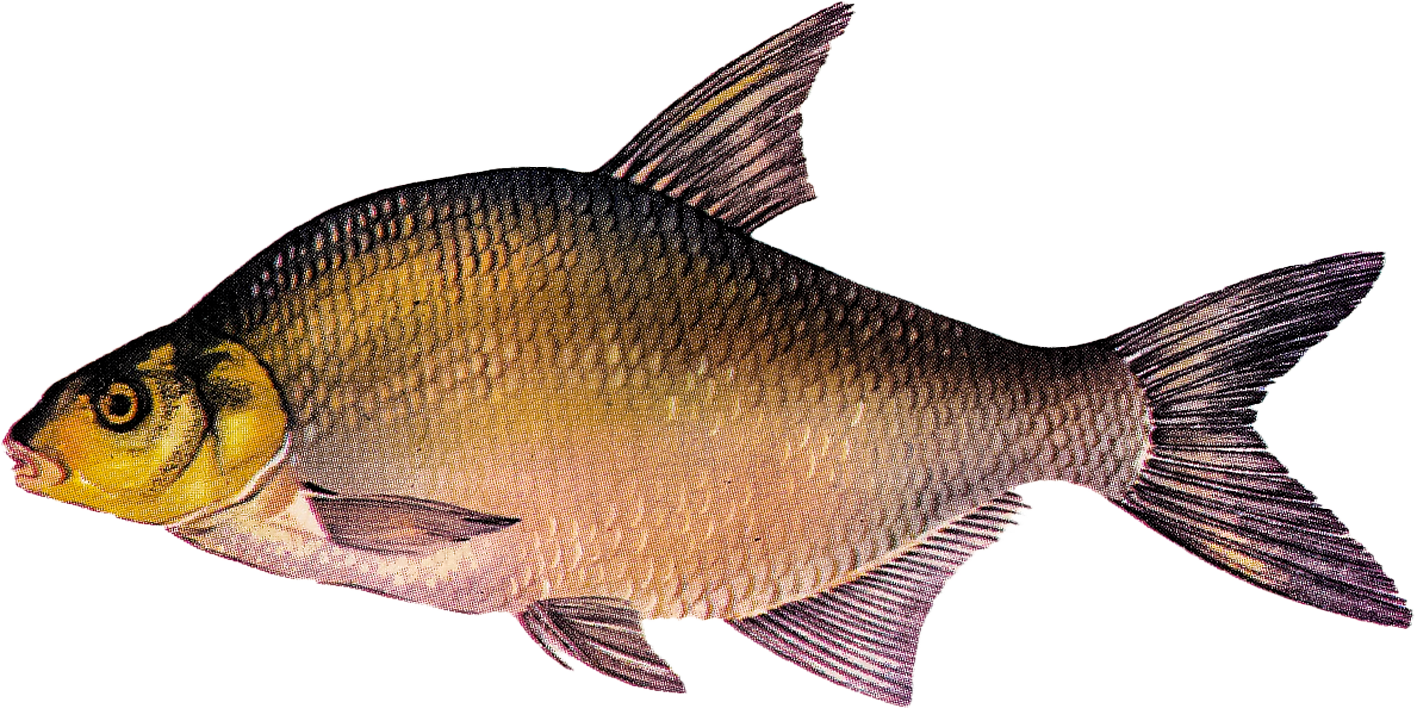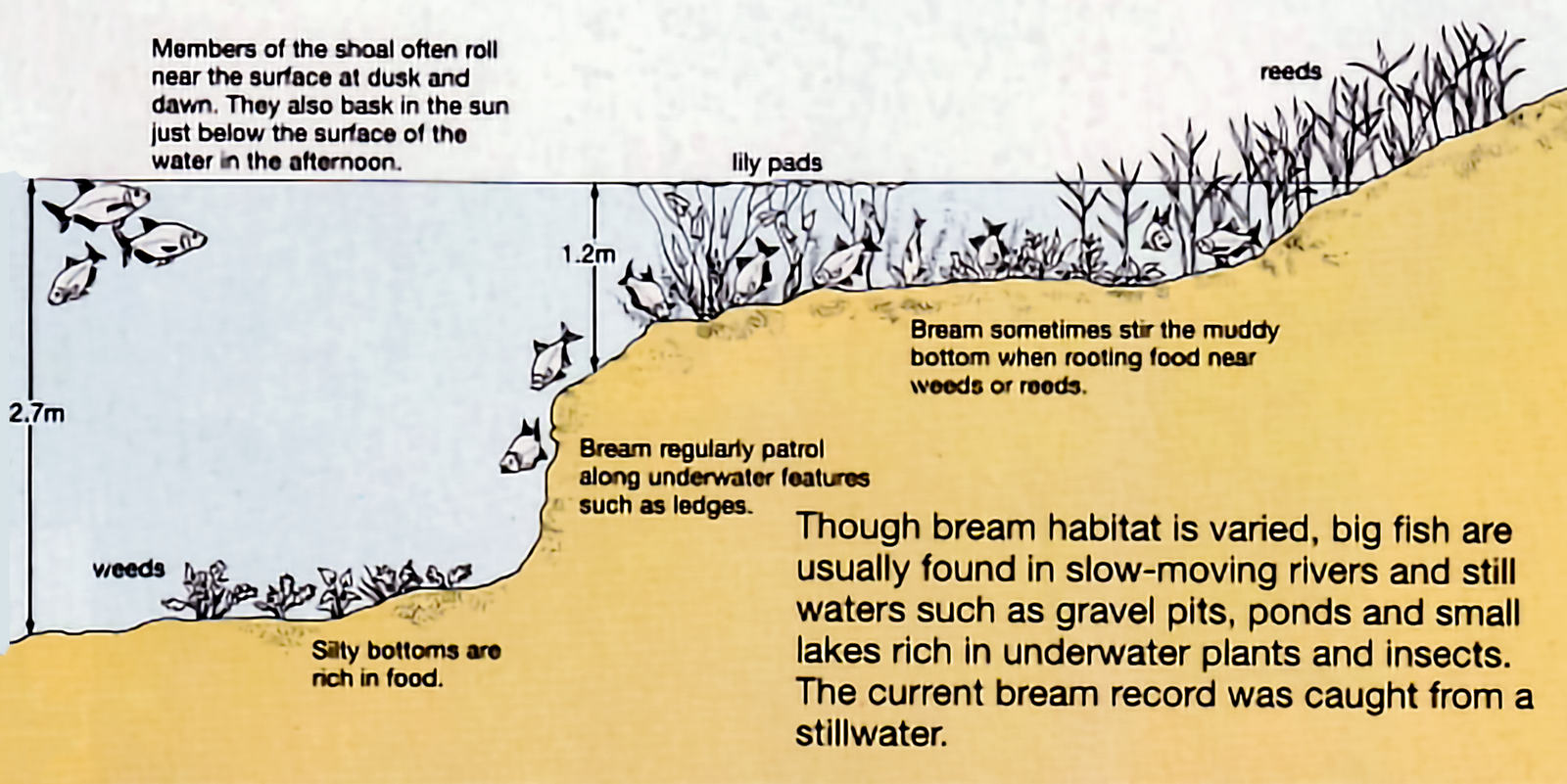

"Bream, a sought-after matchman's fish, live in shoals and can grow fairly large. Catch one, and you're likely to hook a few more."
Common Bream are one of the larger members of the Carp family found in British freshwaters. They have deep, narrow bodies (hence the anglers' name 'dustbin lids') and can swim with ease through weedy or reedy shallow water.

* subject to change

Bream have deep, narrow bodies (hence the anglers' name 'dustbin lids') and can swim with ease through weedy or reedy shallow water.
The Bream's long, dark dorsal Fins are set well back near their blackish, deeply forked Tails. Bream have small, underslung Mouths which can project forwards while they root on muddy lake or river bottoms in search of food.
Another distinctive feature is their covering of Thick Slime.
Young Bream, called 'Skimmers', are silver. As they mature, they turn a dark, golden-olive colour.
Fully mature Bream have dark backs and greenish-bronze flanks with white undersides.
Some Bream with disorders of the nervous system appear two-toned - one half of their body is darker than the other half.
Common Bream are found in most parts of England - except in the Pennines area - and in Central Ireland and Southern Wales. They're also found in a few waters in Scotland.

The small Common Bream, called 'skimmers', are often confused with Silver Bream, a different species altogether. One way to tell the difference is to look at the eyes - Common Bream have much smaller eyes than Silver Bream. Another difference is that Common Bream have about 25-27 rays on their Anal Fin, whereas Silver Bream have about 19-21.
'Skimmers' begin feeding on Algae and Plankton and then graduate to Water Fleas.
Adult Bream eat whatever food is available - including a wide range of Plant material, Insect larvae, Minnows and bottom dwelling Invertebrates.
Larger, older Bream sometimes feed at night on Fry and small Minnows. Members of the shoal frequently roll on the surface of the water as a prelude to feeding. A variety of baits will tempt Bream - Corn, Worms, Boilies, Maggots and Bread - provided you fish them directly on the bottom.
Bream are a shoal fish - the 'cattle' of the underwater world. A shoal of bream, for example, can comprise hundreds of individual fish between 3-41b (1.4-1.8kg).
One possible reason for grouping together is that it serves as a defence against predators.
Bream are thought of as still-water fish. They are attracted to shallow, reedy bays to feed and bask in the sun. They are, however, more adaptable than many anglers think - they can thrive in moderate to fast-flowing rivers, sheltering just outside the main current under tree roots, in deep pools or near undercut banks.
The key to large Bream populations is the diversity and quantity of food available.
Waters rich in Silt and Plant life are an excellent source of food and cover. They usually contain great numbers of Insects and Snails - an important food source for Skimmers.
Some heavily fished waters may also sustain large populations of Bream, for many anglers use vast amounts of Ground Bait and loose feed, providing food for the Bream on a regular basis throughout the fishing season.
Spawning usually occurs at the end of May or early June - when the water temperature reaches 14-17C (57-63F).
The Male Bream establish territories and develop hard, 'Spawning Tubercles' on their heads and bodies.
It is thought that the males swim alongside the Female Bream and buffet them, brushing the Tubercles against the flanks of the females.
This is a signal to the Female Bream to lay their sticky eggs, masses of which are deposited on weeds, reeds, underwater tree roots or debris on the bottoms of rivers or lakes.
Each Female Bream lays as many as 300,000 to 400,000 eggs which hatch in three to twelve days, depending on the water temperature. Warmer water may help the eggs hatch faster than colder water. Only a small fraction of the resulting Bream Fry that hatch will survive.
During the first year, the Bream Fry reach 3in-5in (7.5cm-12.5cm) in length. Overall, growth is slow. It takes five to six years for a fish to reach 2lb (0.9kg), and ten years for one to reach 5lb-7lb (2.3kg-3.2kg).
